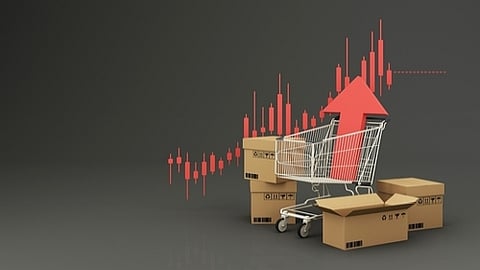Grocery Sales Remain Stable in January
One day after the U.S. government released data showing another bump in the Consumer Price Index (CPI) in January, the Commerce Department reported higher-than-expected retail sales for the same month. According to the latest Census Bureau data, overall retail sales climbed 3% in the post-holiday month of January following a 1.1% dip in December.
Sales at grocery stores held steady in January, rising slightly to $72.98 billion from $72.95 billion in December on an adjusted basis. Likewise, sales at health and personal care stores were up by a small amount, from $33.5 billion to $33.9 billion.
The 0.1% uptick in grocery sales from December to January shows that consumers remain willing to spend – albeit carefully – amid an ongoing high-price environment. Chip West, a retail and consumer behavior expert at marketing solutions company Vericast, told Progressive Grocer that this market is becoming normalized to many shoppers. “The fatigue of inflation has set in, and consumers are feeling better about their financial situations. Shoppers are becoming more comfortable spending outside the necessity categories, which could explain the flat growth in grocery,” he observed.
West points out the behind the steady sales figures, shoppers are actively looking to get the most for their money at grocery stores. "Grocery shoppers are the most savvy and track coupons and discounts closely. They’re continuing to compare prices and shop at multiple locations to get the best deal, which includes shifting to dollar stores and big box discount stores,” he noted.
To move the needle, West advised retailers to continue their own mix of tactics. “Grocers will need to continue incentivizing consumers to spend to bring in revenue. Especially amid inflation, many consumers won’t buy without knowing they’re getting a good deal,” he remarked.
On the same day as the Census Bureau shared its advance monthly sales figures, the Washington, D.C.-based National Retail Federation (NRF) released its latest data affirming that retail sales “bounced back” last month. By NRF’s calculations, core retail sales rose 1.5% from December to January while grocery sales were up 0.1% during that period.
“Consumer spending clearly picked up after the holidays,” said Jack Kleinhenz, NRF’s chief economist. “Sales were helped along by job and wage growth, slightly lower inflation and unusually warm and dry weather that preceded February’s record cold. A large cost-of-living adjustment gave Social Security beneficiaries more money to spend, and many consumers were still drawing on savings built up during the pandemic. January made up for the softer pattern of spending in December that came after early shopping pulled holiday spending forward this past fall.”






